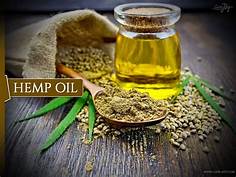





Tamanu Oil - Calophyllum inophyllum
Latin Name: Calophyllum inophyllum
Family: Clusiaceae
The Plant and its environment: Calophyllum inophyllum is from tropical south Asia and Polynesia, where the drupe-like fruit is used. It has naturalized to Hawaii and is also grown in Madagascar. It is cultivated as an ornamental tree due to its handsome leathery, glossy foliage and fragrant white flowers, and is frequently found near the ocean because of its resistance to salt air (Britannica CD 1996)
The Oil: Calophyllum oil is thick, viscous and dark grey-green to black in colour.
Methods of extraction: The oil is obtained by cold-pressing the combined fruit and seed. The following figures are based work done at the Universite d'Antananarvio (Randriambola 1984)
Folk-lore and traditional plant uses
Calophyllum is a traditional medicine in the South Pacific, where it is used for its analgesic, anti-inflammatory and cicatrizant properties. The fruits are expressed to yield a pasty mass rich in triacylglycerols; the paste itself is used in several countries as a healing and analgesic agent in the treatment of burns (Brueton 1995). Formely tamanu was used to treat leprosy.
Principal Constituents
| Type | Based on | Content - % |
| saturated fatty acid units | ||
| C14:0 | myristic acid | 13 |
| C16:0 | palmitic acid | |
| Typical saturated fatty acid unit content | 22 | |
| Monounsaturated fatty acid units | ||
| C18:1 | oleic acid | 33 |
| Typical monounsaturated fatty acid unit content | ||
| Polyunsaturated fatty acid units | ||
| C18:2 | linoleic acid | 40-44 |
| C18:3 | linoleic acid | 0.3-1.3 |
| Typical polyunsaturated fatty acid unit content | 43 |
- Therapeutic properties - external use
can help with various problems of the hair and scalp
eczema, psoriasis
facial neuralgia
a combination of tamanu vegetable oil and Ravensara aromatica essential oil has been used successfully as a treatment for shingles (Herpes zoster) (Penoel 1981)
effective for shingles (Cadwallader 1997, Keville & Green 1995)
stimulates phagocytosis (Schnaubelt 1994)
claimed to have anti-inflammatory and pain relieving properties (Anon 1997) which make it useful in cases of sciatica and rheumatism; it is rubefacient (Quisumbing 1951)
non-irritant to mucous membranes and so can be used on anal fissures, for vaginitis and on cracked nipples.
Cautionary notes
As far as is known, Calophyllum inophyllum has no contraindications.
Reference:Carrier Oils For Aromatherapy & Massage: Len Price with ian Smith & Shirley Price
